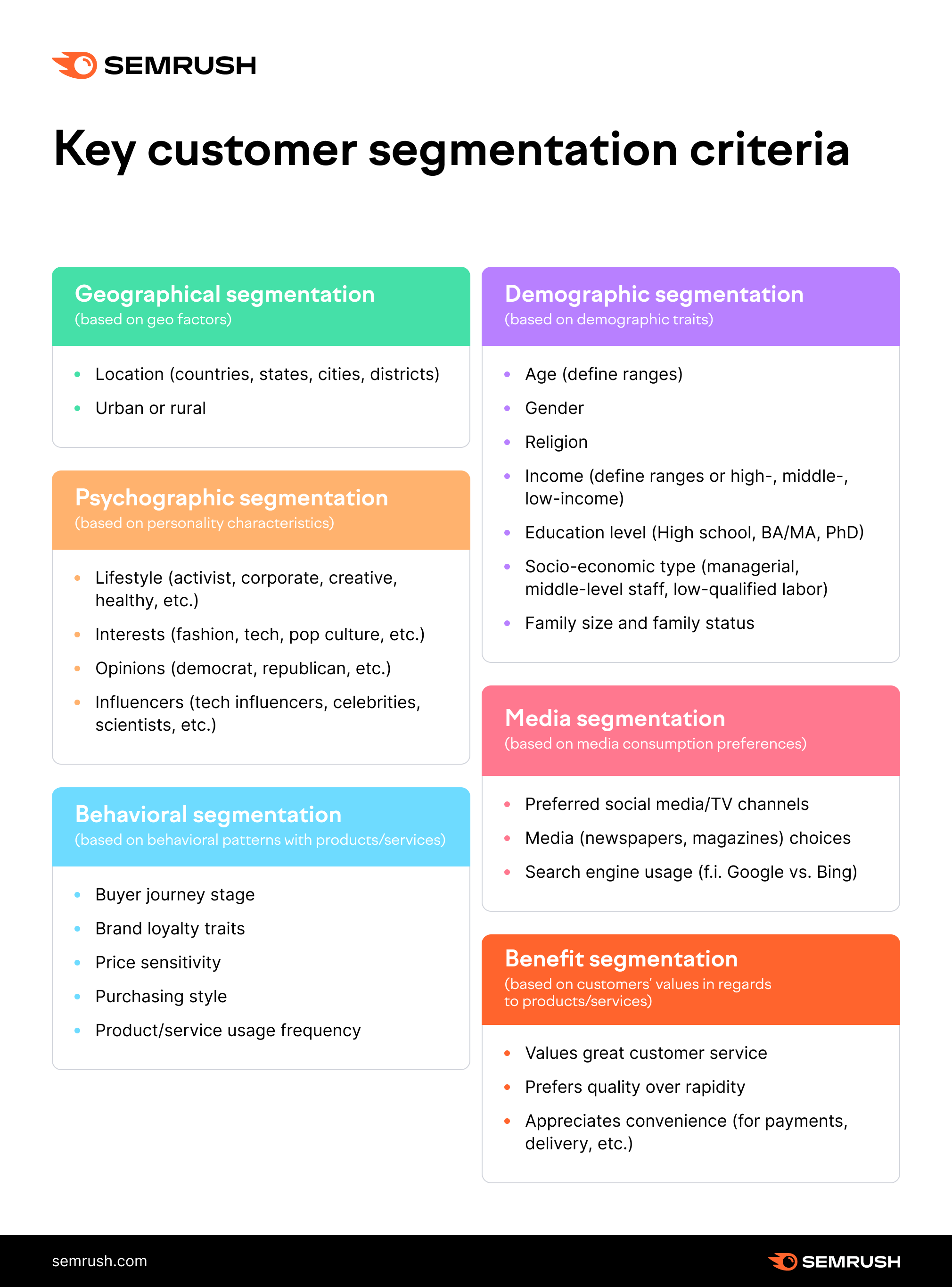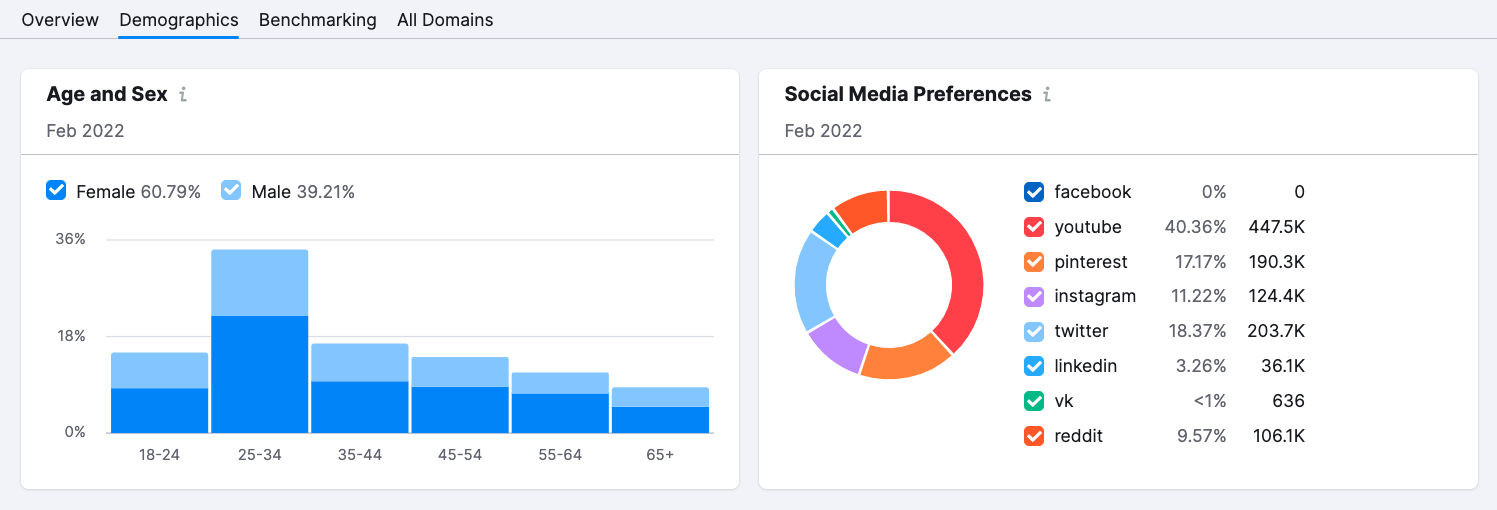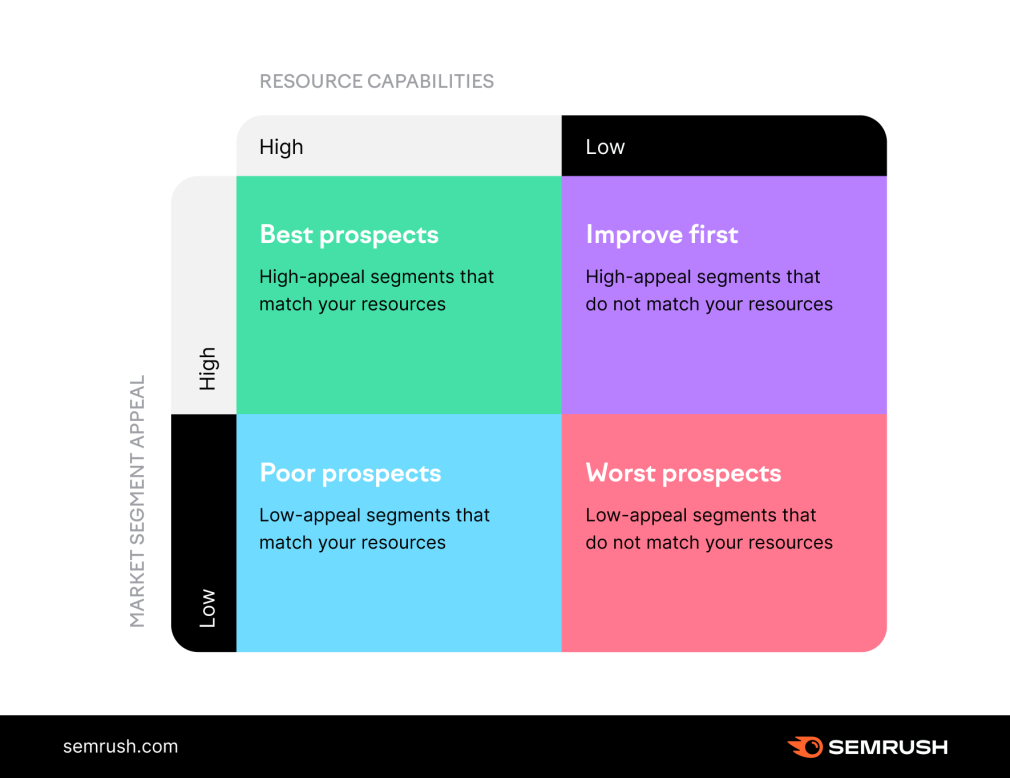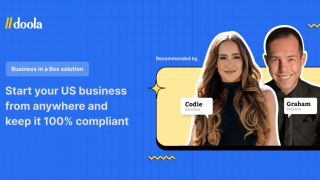When you start developing a marketing strategy, the textbooks tell us that the buyer persona is one of the first things to define. However, with time, the concept of a target audience gets too broad and generic to achieve the most impressive results.
This is where market segmentation comes in. This marketing method creates targeted strategies that are essential to draw the attention of people who are already interested. In other words, instead of trying to convince an audience that the product you're trying to sell is worthwhile, you'll be able to place it in front of people who are already looking.
What is Market Segmentation?
The basic definition of market segmentation is when your target audience is divided into smaller categories that share similar characteristics.
Here are a few reasons why this can benefit your brand:
Creating hyper-targeted ads; Building stronger relationships with customers; Differentiating your brand from competitors; Identifying marketing tactics that have more impact.With market segmentation, you will likely find that certain sections of your audience are more motivated to purchase during certain seasons. Perhaps people living in specific local areas are more interested in a subsection of your products, and so on.
Market Segmentation: Key Criteria
You can and should define your own customer segmentation, but the key textbook examples are:
Geographic: country/city, urban/rural etc. Demographic: age, religion, gender, income, socio-economic type, education, family size/status Psychographic: lifestyle, interests, hobbies, opinions, influencers Behavioral: buyer journey stage, brand loyalty traits, price sensitivity, purchasing style, usage rate Media: social media/TV/newspapers/search engine preferences Benefit: customer service, quality, and other specific expectations.
Geographic Segmentation
This is one of the simplest target market segmentation methods. You'll divide your customers based on their geographic borders. You can segment them according to:
City / State / Country / Zipcode Radius around a location Climate Rural or urbanWhen it comes to geographic market segmentation examples, consider a brand that sells a variety of clothing styles. They'll want to segment their audience according to the climate in order to target people who are in need of warmer clothing versus cooler clothing according to the season in their area.
Brands that have a brick-and-mortar store but also sell their goods online may also want to provide special incentives for customers who live near their physical location.
Demographic Segmentation
Target market segmentation based on demographics can be one of the most effective ways to target specific customers. The reason for this is because you can uncover the demographics of your audience easily.
You can also discover demographic information by using Facebook Audience Insight, Instagram Audience Insight, and Google Analytics. These easy-to-use tools will give you information on the following:
Age / Sex; Location; Ethnicity; Income / Employment status; Times they're most often online; Household, and so on.Segmenting a target audience based on demographics can open up new possibilities for your marketing strategies. For instance, new products that are coming to market that are only relevant to women will save marketing dollars over time. Brands that are also selling luxury goods will find more success by marketing to people who have higher incomes.
Your audience may be primarily teenagers or young adults, but you'll also want to keep in mind that their parents may be interested in products when it comes to purchasing gifts for them. Marketing towards their parents can help you fill in the gaps when it comes to dryer seasons.
Psychographic Segmentation
Psychographic segmentation is all about the target audience's minds. By knowing what they care about on a day-to-day basis, you'll be able to create content that they engage with consistently and share with family and friends. This includes learning their:
Personalities; Hobbies / Interests; Values / Goals / Beliefs; Lifestyles.These can be much harder to identify compared to demographics and location. However, once you have a good grasp of your audience's psychographics, you'll be able to tailor your marketing strategies in a more personally way.
Beyond selling a product or service, using psychographic information in your marketing can help build relationships and rapport with customers. You'll be able to build a strong following of people who trust the brand!
If you don't know where to start on uncovering this data, try including more questions in your emails, social media content, and more. People are happy to answer quick questions about themselves when it comes to their aspirations and dreams. You can also ask them about their opinions of current events or “this vs that” questions.
B2B Segmentation
B2B companies need to use different tactics and strategies when it comes to segmenting audiences. Although it may seem more difficult compared to B2C, you'll be able to differentiate companies just as effectively with the following tactics.
Firmographics
You can think of firmographics as demographics for B2C market segmentation. You'll take into account the size of the company, the culture, industry, location, and more. This is one of the most popular ways to segment companies, because it's fairly easy to acquire this information.
It's also straightforward to describe different company segments to different departments. For instance, the sales department will easily understand the prioritization of companies with 200 employees or more.
Tiering
Customer tiering is based on how well you think a company can match your business goals. For instance, companies that will be able to match your sales goals each month may be at the top of your tier. By segmenting customers based on their customer lifetime value, you'll be able to use your marketing dollars in a more effective way.
This doesn't mean that you'll ignore companies that have a lower customer lifetime value. Instead, you can focus on products and services they need rather than trying to draw them in with offers that they historically don't value.
Needs
This is one of the most straightforward ways to segment B2B customers. For instance, if you're a company that offers remote HR solutions, you'll be able to segment your customers based on how often they need your services. This also ties into company firmographics, as the size of a company, as well as their budget, can help determine the solutions they're looking for.
You may have older companies that still prefer placing orders over the phone. Conversely, some companies need to be able to easily order online at any time.
The main downside of this type of segmentation is that it's harder to communicate to other departments. This can be tackled with comprehensive documentation for each company based on their history with your company.
Behavior
Last but not least, segmenting customers based on behavior is a nice complement to needs-based customer segmentation. The reason for this is because you'll be paying attention to how they interact and engage with the products and services.
Perhaps a company seems to be struggling with implementing your SaaS platform and frequently calls the customer service line for help. If this is the case, there may be simpler solutions available that you can recommend that will make it easier for them in the future. You'll be taking a look at each customer and considering whether there's any upsell potential, or whether you're at risk of losing them.
How to Gather Intel for Market Segmentation
While a lot of the information about your customer base should come from interviews and qualitative analysis, you can also find a lot of useful data across various tools:
For external analysis, you can use Semrush’s Market Explorer tool to get preliminary intel about the in-market audience: from demographics and maximum audience potential to media preferences and social media habits. For internal stats, make sure to use your CRM system’s data and Google Analytics. The latter reveals some basic info about your audience demographics and user behavior. You can use it to learn about each customer segment’s response to various tactics and, thus, find out who can have the highest impact.
For internal stats, make sure to use your CRM system’s data and Google Analytics. The latter reveals some basic info about your audience demographics and user behavior. You can use it to learn about each customer segment’s response to various tactics and, thus, find out who can have the highest impact. Putting Market Segmentation into Action: Effective Marketing That Works
Once you’ve identified your primary market segments, you can apply Hooley’s Segment Attractiveness and Resource Strength framework to assess each category’s appeal based on your internal resources:

The key point of market segmentation, however, is to further use it to develop your targeting and positioning. These are the foundations of the STP (Segmentation, Targeting, Positioning) Model:
Targeting: based on various customer segments, you can assess which one can potentially respond better to your offering, thereby bringing more profit and/or staying longer with your brand. Positioning: by considering your selected primary market segments, you can define how to go about placing your product in front of each segment and will be able to narrow down your key value proposition.Innovative SEO services
SEO is a patience game; no secret there. We`ll work with you to develop a Search strategy focused on producing increased traffic rankings in as early as 3-months.
A proven Allinclusive. SEO services for measuring, executing, and optimizing for Search Engine success. We say what we do and do what we say.
Our company as Semrush Agency Partner has designed a search engine optimization service that is both ethical and result-driven. We use the latest tools, strategies, and trends to help you move up in the search engines for the right keywords to get noticed by the right audience.
Today, you can schedule a Discovery call with us about your company needs.
Source:





